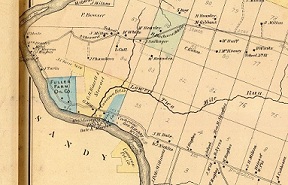|
April 15, 2020 – Oil & Gas History News, Vol. 1, No. 4 Oil & Gas History NewsSpring is here, but most of us must take in the changing of the season from home. As communities navigate this difficult period, the American Oil & Gas Historical Society hopes this month’s newsletter might help you fill your time at home with intriguing reading material. Even in these tough times, we continue to look to history for inspiring stories that show America’s enduring energy heritage. These latest This Week in Petroleum History posts share distance learning resources for teachers, students and parents.
Monthly Highlights from “This Week in Petroleum History”
Links to summaries and articles from four weeks of U.S. oil and natural gas history, including oilfield discoveries, new technologies, petroleum products, and more. April 13, 1974 – Oklahoma Well sets World Depth Record After 504 days and about $7 million, the Bertha Rogers No. 1 well reached a total depth of 31,441 feet before being stopped by liquid sulfur. Drilled in the heart of Oklahoma’s Anadarko Basin, it was the deepest well in world for several years and the deepest in the United States for three decades until exceeded in 2004… April 10, 1866 – Brothers patent Railroad Oil Tank Car James and Amos Densmore patented their “Improved Car for Transporting Petroleum” designed for the new Pennsylvania oil regions. The Densmore tank car briefly improved oil industry transportation infrastructure. A decade later, Amos invented a new design for typewriter keyboards; his “Q-W-E-R-T-Y” arrangement helped prevent keys from colliding… April 4, 1951 – First North Dakota Oil Well reveals Williston Basin After eight months of difficult drilling and severe snowstorms, Amerada Petroleum discovered oil in North Dakota – revealing the Williston Basin two miles beneath Clarence Iverson’s farm near Tioga. About 30 million acres would be leased within two months of the discovery… March 26, 1930 – “Wild Mary Sudik” makes Newreels What would become one of Oklahoma’s most famous oil wells of the Great Depression erupted from a geologic formation about 6,500 feet beneath Oklahoma City. Pressured natural gas from the Wilcox Sand proved difficult to control in the prolific Oklahoma City field. Within a week of the gusher, Hollywood newsreels featured it in theaters across the country…
Recent Article UpdatesEditorial content on the American Oil & Gas Historical Society website includes these articles: The offshore industry’s robotic technology advanced in 1966 when the government retrieved hydrogen bombs lost in the Mediterranean Sea after a B-52 crashed off the coast of Spain. America’s first cable-controlled underwater research vehicle (CURV) recovered three 70-kiloton bombs from a depth of 2,850 feet. See ROV – Swimming Socket Wrench. Exploration companies rushed to Portland, Indiana, in 1886 after natural gas was found at a depth of only 700 feet. The discovery came just months after a spectaculargas well about 100 miles to the northeast – the “Great Karg Well” of Findlay, Ohio. Andrew Carnegie would proclaim natural gas replaced 10,000 tons of coal a day for making steel. See Indiana Natural Gas Boom. South of the Red River border with Oklahoma, at Electra, Texas, the Clayco No. 1 well struck oil on April 1, 1911. As news spread through town, people thought it was an April Fools joke, but the gusher on William Waggoner’s ranch launched an oil boom that would last for decades. In 2001, community oil history activists convinced Texas legislators to designate Electra the Pump Jack Capital of Texas.
Featured Map |
|
In early 1864, John Wilkes Booth made the first of several trips to Franklin, Pennsylvania, where he purchased an oil lease on the Fuller farm. Maps of the day show the three-acre strip of land on the farm, about one mile south of Franklin and on the east side of the Allegheny River. Booth formed an oil company, believing his well would make him a fortune. It didn’t. Learn more in Dramatic Oil Company. |
 |
|
I hope these and the website’s other petroleum history articles and images can help brighten your day at home. The historical society is especially grateful to the growing number of supporting members and their expressions of genuine concern. Any contribution is appreciated and helps keep the historical society operating. — Bruce Wells, Executive Director, American Oil & Gas Historical Society _______________________________ The American Oil & Gas Historical Society preserves U.S. petroleum history. Become an AOGHS supporting member and help maintain this energy education website and expand historical research. For more information, contact bawells@aoghs.org. © 2020 Bruce A. Wells.
|



